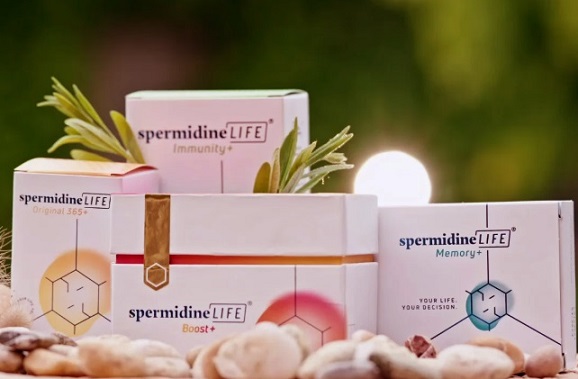Nikhil Prasad Fact checked by:Thailand Medical News Team Jan 06, 2025 3 months, 2 weeks, 6 days, 2 hours, 48 minutes ago
Medical News: A groundbreaking study from researchers at Shanghai Jiao Tong University School of Medicine, China Medical University, and Southern University of Science and Technology in China, has shed light on the role of dietary polyamines in the risk of developing type 2 diabetes mellitus (T2DM). With T2DM becoming an increasing global burden, understanding how specific dietary components influence its onset is crucial.
 Dietary Polyamines and Diabetes Risk in a Large UK Cohort Study
What Are Polyamines?
Dietary Polyamines and Diabetes Risk in a Large UK Cohort Study
What Are Polyamines?
Polyamines are natural compounds found in various foods, including spermidine, spermine, and putrescine. These compounds interact with cellular molecules and are known for their roles in cell growth, differentiation, and autophagy. They also exhibit anti-inflammatory and antioxidant properties, which may help prevent chronic diseases like T2DM. While spermidine is abundant in plant-based foods like cereals and legumes, spermine is more commonly found in animal-derived products such as meat. Putrescine is present in both plant and animal foods and can also result from microbial activity in food products.
Key Findings of the Study
The study analyzed dietary data from 168,137 participants in the UK Biobank, a large population-based cohort. Participants were initially free of diabetes and were followed for a median of 11.2 years. Using advanced statistical models, researchers identified significant associations between dietary polyamine intake and T2DM risk.
-Spermidine and T2DM: Higher dietary spermidine intake was linked to a lower risk of T2DM. Individuals in the second, third, and fourth quintiles of spermidine consumption had hazard ratios of 0.87, 0.87, and 0.91, respectively, compared to the lowest quintile.
-Putrescine and T2DM: Dietary putrescine intake exhibited a similar protective effect, with hazard ratios ranging from 0.84 to 0.87 for higher quintiles of intake.
-Spermine and T2DM: In contrast, higher dietary spermine intake was associated with an increased risk of T2DM. The hazard ratio for the highest quintile was 1.11 compared to the lowest quintile.
Study Design and Methods
This
Medical News report details the meticulous research methods. Dietary polyamine intake was assessed using a validated online 24-hour dietary recall questionnaire. T2DM cases were identified through hospital records using diagnostic codes. Advanced statistical analyses, including Cox proportional hazards models and restricted cubic spline models, were used to examine dose-response relationships and adjust for potential confounding factors like age, sex, body mass index, and lifestyle behaviors.
The Role of Food Sources
The findings suggest that polyamine-rich diets, particularly those emphasizing plant-based foods, may help lower the risk of T2DM. For example, spermidine-rich diets typically include whole grains, legumes, and vegetables, alig
ning with broader dietary recommendations for chronic disease prevention. Conversely, the association of higher spermine intake with increased T2DM risk highlights the potential risks of diets high in red and processed meats.
Biological Mechanisms Behind the Associations
The protective effects of spermidine and putrescine may stem from their roles in reducing oxidative stress and inflammation, processes known to contribute to diabetes. Spermidine has also been shown to induce autophagy - a cellular process that helps remove damaged components and improve metabolic health. On the other hand, excessive spermine intake might disrupt metabolic pathways or promote adverse effects when consumed in large amounts.
Sensitivity and Stratified Analyses
The study’s robustness was further supported by sensitivity analyses. These analyses confirmed consistent associations between dietary polyamines and T2DM risk, even after accounting for variations in dietary assessments, follow-up durations, and population subgroups. Notably, the associations varied slightly by factors such as age, gender, and socioeconomic status, underscoring the complex interplay of diet and health.
Implications for Public Health
These findings open new avenues for dietary interventions targeting T2DM prevention. By promoting polyamine-rich plant-based diets and moderating the intake of animal-derived polyamines, individuals may significantly reduce their risk of developing diabetes. This study also underscores the need for further research into the optimal levels of dietary polyamine intake and the underlying biological mechanisms.
Study Limitations
While the study provides valuable insights, it has limitations. The observational design cannot establish causality, and dietary data were self-reported, which may introduce measurement errors. Additionally, the findings may not be generalizable to non-European populations, as the study cohort primarily consisted of individuals of European ancestry.
Conclusion
The study concludes that dietary polyamines play a significant role in T2DM risk. Increased intake of spermidine and putrescine is associated with a reduced risk of T2DM, while higher spermine intake correlates with an increased risk. These findings highlight the potential of polyamines as targets for nutritional interventions and emphasize the importance of dietary quality in preventing diabetes. Future research should focus on controlled trials to explore the causal relationships and the mechanisms underlying these associations.
The study findings were published in the peer-reviewed journal: Nutrients.
https://www.mdpi.com/2072-6643/17/1/186
For the latest on Diabetes, keep on logging to Thailand
Medical News.
Read Also:
https://www.thailandmedical.news/news/cilostazol-mitigates-diabetes-induced-neuropathy-and-peripheral-arterial-disease
https://www.thailandmedical.news/news/saffron-and-its-role-in-improving-health-in-diabetic-and-prediabetic-patients
https://www.thailandmedical.news/articles/diabetes
